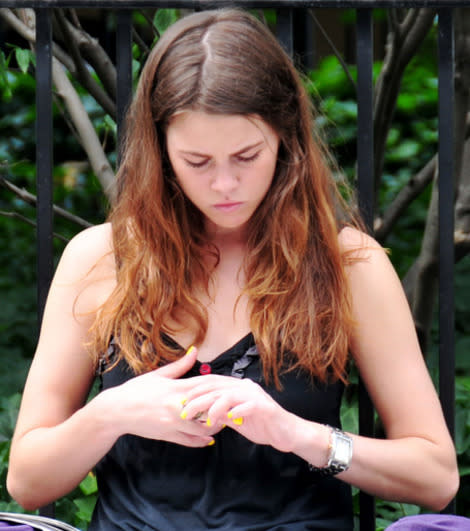What Your Fingernails Say About Your Health

You've heard the expression, "The eyes are the window to the soul," right? Well as it turns out, your fingernails can often be the window to your health. How so?
Certain changes to your nails can be a sign of an underlying disease or disorder. Just to name a few:
Yellow nail syndrome happens when nails thicken and nail growth slows. Of course, as per its name, your nails will often turn yellow. Yellow nail syndrome is often a sign of respiratory disease. If you notice that your nails are yellow but are growing normally, it could be a sign of diabetes. That's because diabetes can cause glucose to attach to collagen proteins in the nails, making them appear yellow. If your nails are yellow and you notice other symptoms of diabetes, such as increased thirst or urination, see your doc right away.
Another symptom of a bigger problem? Spoon nails, in which nails are concave and appear scooped away from the finger. You can usually even put a drop of liquid in the "spoon." This can be related to an iron deficiency anemia, hypothyroidism or a liver disease.
Also see: 4 things your hair can say about your health
Interestingly enough, there are a few changes to your nails that can be a sign of cardiovascular problems as well. Splinter hemorrhages, or red and brown lines underneath your nails, can be a sign of a heart valve infection. They are called such because they resemble splinters in your nail, but they are actually blood. Another sign of a problem relating to your heart? Clubbing of the nails, in which the nail softens and seems to float over the nail bed instead of being firmly attached. In nail clubbing, the last part of the finger may appear large or bulging and the nail curves downward over your finger.
Though you may not have noticed any of the above conditions in your own nails, I'm sure you've seen a white spot or two on your nails from time to time. Like me, you may have heard that is from a calcium deficiency and means you need to drink more milk. This isn't the case, though. The technical term for the white spots? Leukonychia. They are more likely related to a past injury to the nail that happened weeks prior to you noticing the spots. Sometimes they are from an allergic reaction to nail polish or a mild infection.
Another common problem? Brittle nails, which is a common symptom of aging. If you're not old, (and heck, none of us is, right?) then brittle nails could a symptom of a relatively benign problem, such as nails that are exposed too long to soap or water, or something more serious. The trick is to notice if another change to the nails has occurred, such as a change in nail thickness or color. If you do notice a change, best to check with a dermatologist, since 10 percent of dermatological complaints are nail-related, and skin conditions, such as psoriasis, can cause changes to your nails as well. If the changes to your nails are a sign of something underlying, the dermatologist can point you in the right direction.
Bottom line? Best to practice good nail hygiene (cut and clean regularly) and see a doc if you notice anything out of the ordinary.
Related stories:
